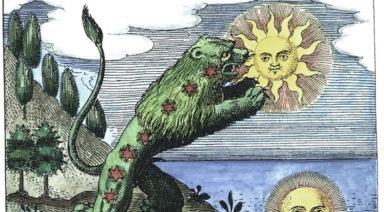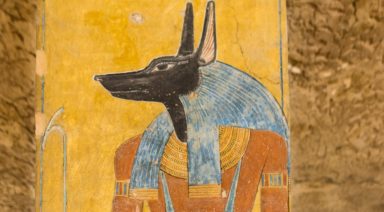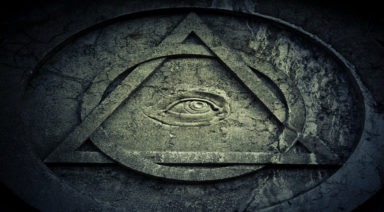A Brief History of the Illuminati
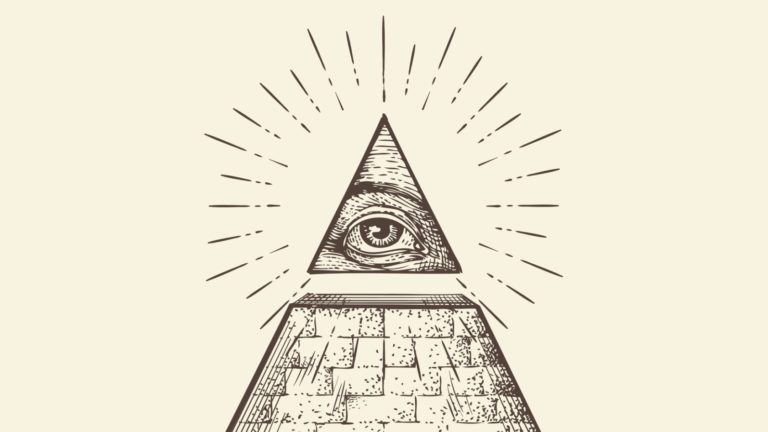
Origin of the Illuminati
When the word Illuminati is mentioned, there are several things that immediately come to mind; Bilderberg, New World Order, the Cabal, celebrities and politicians to name a few. But, whether or not the Illuminati is a covert organization of reptilians with an esoteric agenda for global domination via subliminal enslavement, or a secret club of elites who throw strange occult parties, it does have a traceable origin similar in nature to the Freemasons.
The Illuminati date back to the mid-1700s, founded by a Bavarian professor at the University of Ingoldstadt named Adam Weishaupt. Weishuapt was a law professor, followed by an even higher honor of Professor of Natural and Canon Law. Unfortunately, he butted heads with the Jesuit priests of the University. Weishaupt’s world-views were more cosmopolitan and liberal than the bucolic, dogmatic views of the priesthood. In response, he created the Illuminati, a secret society eponymously promoting enlightenment as well as moral progress.
The priesthood, waging significant political power in those days, revoked his academic credentials and had him banished from the country. He moved on to Germany where he was better received and free to form the foundation of the Illuminati and its philosophy.
The mission statement of Weishaupt’s Illuminati was, “by the mutual assistance of its members, to attain the highest possible degree of morality and virtue, and to lay the foundation for the reformation of the world by the association of good men to oppose the progress of moral evil.”
While his ambitions were ostensibly noble, Weishaupt intended to change the way European nations were run, by subversive means. Acceptance requirements to become a member of the Illuminati consisted primarily of wealth, societal influence and political pull. Members of the society consisted of bankers, politicians, doctors and those of general upper-class importance. Thus, planting the seeds for the modern conception or iteration of the Illuminati. One of the original member’s name that is still highly recognized and associated today with the Illuminati was Mayer Amschel Rothschild.
The Founding Father
The Illuminati was founded by Weishuapt in the year 1776, an obviously significant year in American history. It is pretty commonly known that many of the founding fathers were members of the freemasons.
George Washington, Benjamin Franklin and John Hancock were notable masons, and the influence of their membership can be seen in the philosophies they imbued in the Constitution as well as symbolism in our currency.
The basic explanation is that they were simply freemasons who kept their philosophies secret because it clashed with church doctrine, but some believe it to be deeper and linked to the Illuminati. The use of the symbolism of the all-seeing eye above a pyramid on the dollar bill is said to have come from Weishaupt. The Latin words encircling the pyramid translate to “it has favored our undertakings, new order of the ages” or some take it to mean “the Announcement of a New World Order.”
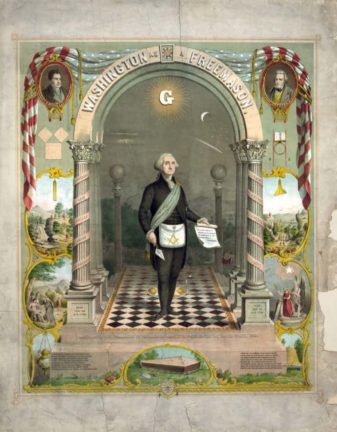
Conspiracy Theories
The Illuminati has become a household term now with its popularization in media and pop culture. Conspiracies range as to the extent of the power of the Illuminati, but most maintain that the group is made up of high-brow politicians, bankers, business moguls and celebrities. On the extreme end of the spectrum, these members are thought to be an alien reptilian species controlling humanity.
The most notorious of the clandestine groups associated with the Illuminati is the Bilderberg Group. The Bilderbergers hold an annual meeting, which is no secret and is ostensibly held to discuss issues pertaining to European and North American relations.
The Bilderberg website states that the meeting is an amalgam of leaders and experts from politics, media and business who are invited to discuss megatrends and major issues facing the world. What makes the meetings mysterious and has led to conspiracies surrounding it, is that they are held under the “Chatham Rule,” meaning the identities of all attendees are kept secret.
Conspiracies surrounding the plans hashed out at Bilderberg meetings concern the plotting of a New World Order through methods ranging from population control, to the spread of pandemics, to Chemtrails, geo-engineering, and a secret space program.
Other tactics thought to be discussed at these meetings include bribery and compromising of politicians through various means. A major point of contention, for American citizens that are potentially involved in these meetings, is that they are breaking the law through the Logan Act, which prohibits unauthorized citizens from negotiating with foreign governments that have disputes with the U.S.
Whether the Illuminati is real or still active is up for debate, but the clandestine Bilderberg meetings will undoubtedly continue to fuel conspiracies. Are they plotting diabolical schemes? And if there’s nothing to hide why is their membership kept so secret?
Exploring Alchemical Symbols

Symbols and allegories were common parlance during the “golden age” of alchemy — the 17th and 18th centuries. An example is the 17th Century British folk song, “John Barleycorn,” which tells the harrowing story of poor John Barleycorn, subjected to torture, abuse, death, and ultimately, triumph.
“They ploughed, they sowed, they harrowed him in
Throwed clods upon his head,
Til these three men were satisfied
John Barleycorn was dead.”
Other verses describe John Barleycorn being cut off at the knees, tied around the waist, stabbed in the heart with forks, having his skin split from the bone and ground between two stones, and being drowned. The final verses are:
“There’s beer all in the barrel and brandy in the glass
But little Sir John, with his nut-brown bowl, proved the strongest man at last.
And the huntsman he can’t hunt the fox nor loudly blow his horn
And the tinker he can’t mend his pots without a little barleycorn.”
In John Barleycorn’s final incarnation, as distilled whiskey, he can lay low (intoxicate) any man who challenges him; others depend on him to ease their existence. The abuses our hero endures correspond to the stages of planting, growing, harvesting, and milling barley and distilling whiskey.


